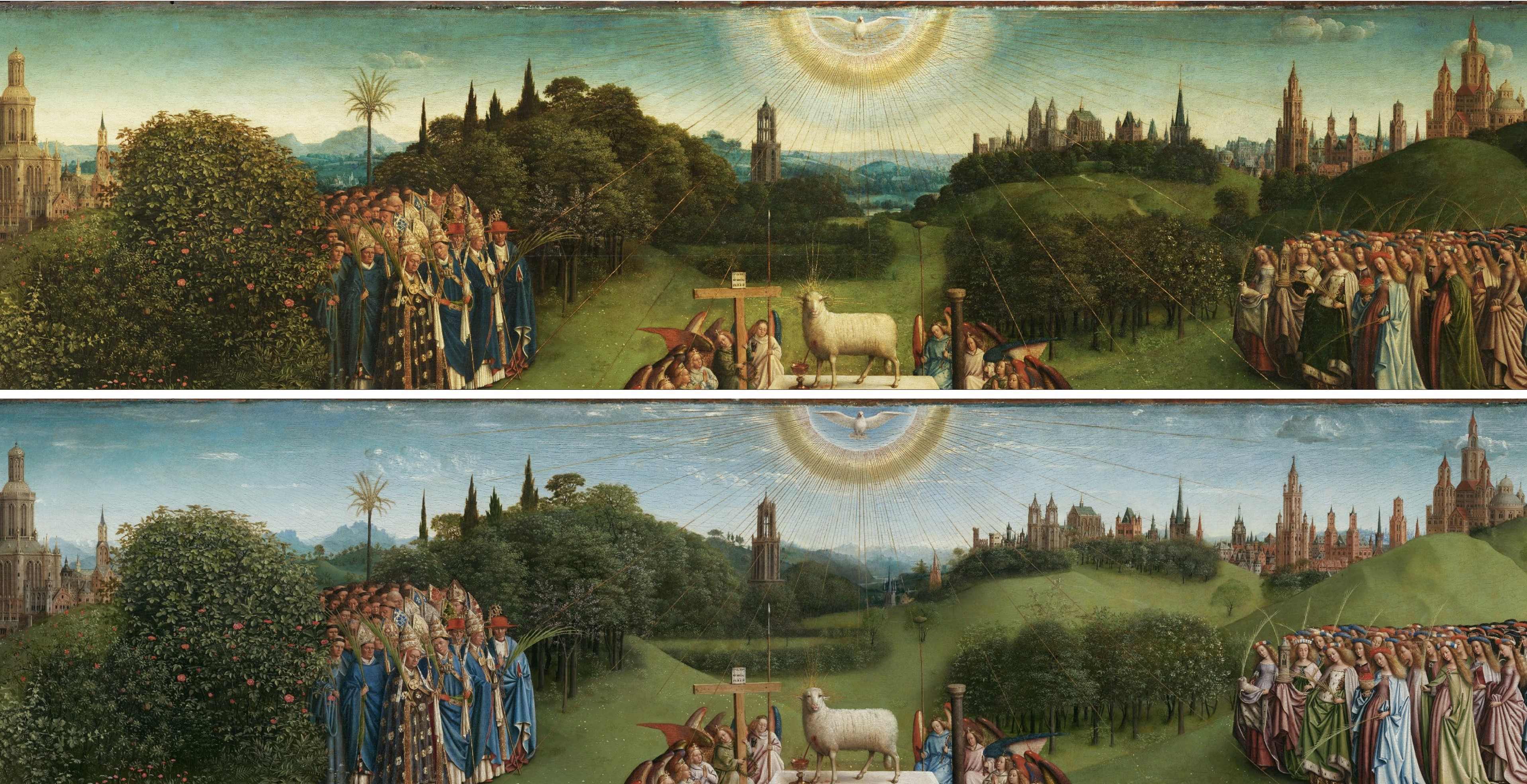Is restoration phase 3 a danger to the Altarpiece?

As the Ghent Altarpiece is World Heritage, we believe it to be our painful duty to bring the damage to the general attention of the wider public, primarily to prevent similar damage occurring in phase 3. After the revelation of the damage in the Adoration, the authorities have taken unsatisfactory measures: the same person in charge of supervising phase 2 will unfortunately continue to conduct phase 3. There will be more (H.V.: unrealistic!!) ‘supervision’, mainly by the committees. The same experts will continue to do the job they did not succeed to do well in phase 2. For now, it is said that they ‘are unanimous’, (this is after ‘dissenting’ voices are no longer welcome), and it is unclear in what they are unanimous. Probably in agreeing with the Authorities and respect the total confidentiality that is requested from them in the future.
Was a preliminary examination even carried out? No result of any such examination was ever shared with the national committee as far as we know. No diagrams with precisely mapping out of overpainted areas. No questions asked to the national committee: scraping off? Or not? Ill-fated initiatives were taken by the restorers, without consultation of the advisory committees (or without enough consultation of the international committee?). Inappropriate dating was made of paint layers, identified as “16th-century”, while no scientific method allows such precise dating. The restorers justify the scraping off with the scalpel by the late date of “16th-century”, which excludes the paternity to Van Eyck. In fact, the dating was merely done at sight (“a granular appearance”) that the restorers compared with the overpainting on the closed Altarpiece in phase 1.
After the restoration was completed, comes the explanation that “the 16th century overpaints had first to be removed before the study of the hands of Hubert and Jan respectively.”
The ‘discovery’ of the participation of Hubert came only after the completion of the restoration, although the details that led the restorers to identify the participation of Hubert had always been visible on the surface.
The lack of preliminary examination led to confusion, errors and catastrophic results. The report and the publication required an additional year of study by the restorers because the situation that was complex from the start, had evolved towards incomprehensible.
Since phase 3 of the restoration recently started under the same direction as phase 2, again without a thorough examination, we are asking to set a STOP to the restoration, until the outstanding questions are answered. Large parts of the upper register (phase 3), the wings and middle panels, are in good or excellent condition. It would be wise to restrict the restoration to a respectful conservation treatment rather than an invasive scalpel restoration.
Phase 3 started with un-varnishing the surfaces. That is OK. However, what followed was - as far as I know - a request for permission to scrape off ‘test windows’ (small surfaces). Thus ‘examination by scraping off’. The thorough examination with naked eye, microscope and with all available technical documents, the mapping out of ‘over paintings’, preliminary discussions with the Committees on the general decisions …. apparently will not occur. One of the questions to be discussed is what to do with the old repairs. There are probably old repairs in the large cloths. In particular when the Saint John’s panel was broken in the 20th-century, and had to be repaired, retouches were probably done by Albert Philippot. The latter was ‘Prix de Rome’ (Prize of Rome: rewarding excellence for painters, 1667-1968) and carried out careful retouching. Taking those off and having them replaced by our ‘phase 2’ restorers could worsen the situation.
